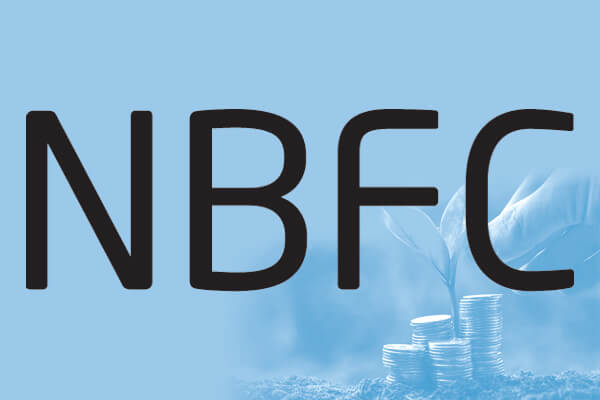This article is written by Shivangi Lal pursuing a Diploma in International Business Law. This article has been edited by Zigishu (Associate, Lawsikho).
This article has been published by Sneha Mahawar.
Table of Contents
Introduction
In late 2018, a major non-banking financial company (NBFC) defaulted, causing a credit crunch in the Indian economy. The failure raises questions on the role of NBFCs in the Indian economy alongside banks and the extent of their power.
The nature and scope
As their name implies, NBFCs are non-banks that provide credit like banks. Though banks and NBFCs operate differently from one another, one crucial difference is their funding models. While all banks are allowed to accept public deposits-both demand and time deposits-all NBFCs are not allowed to accept public deposits. No NBFC is permitted to accept demand deposits and most of them are not permitted to accept time deposits.
NBFCs have been unable to accept public time deposits since 1997, resulting in deposits made by the public constituting a small portion of their total liabilities and no new licenses have been granted since 1997. NBFCs typically raise capital by borrowing from commercial banks and by issuing debentures and bonds (often to banks and mutual funds), as well as by accumulating equity capital.
A critical difference among NBFCs is their nature of business (lending), their focus on geographical and customer areas, as well as their size. The Reserve Bank of India (RBI), uses three parameters to classify NBFCs:
Nature of business activities
Ten different categories of NBFCs were classified based on the company’s business. Investment and credit firms, HFCs (Housing finance companies), and microfinance institutions are the three most important in terms of credit provision. Under joint liability group financing, microfinance institutions primarily provide microloans to borrowers (mostly women) from economically deprived segments. As a reason, they are unimportant for understanding commercial credit, while credit and investment firms (often referred to as NBFCs) and HFCs are crucial in the commercial credit arena. As of March 19, 2020, the total HFC loan book was around $20 trillion, accounting for a considerable portion of total commercial credit.
Access to public deposits
On 30 September 2019, only 74 of 9,462 NBFCs registered with the RBI were NBFCs-D. NBFCs are divided into two categories: NBFCs accepting public deposits (NBFCs-D) and (ii) NBFCs not accepting/holding public deposits (NBFCs-ND).
Size
The size of NBFCs varies substantially. Unlike banks, which require a license to operate and a greater beginning capital (currently $5 billion for a universal bank), the minimum capital required to start an NBFC is comparatively low at $20 million. Many NBFCs are quite small, with total assets of less than a billion dollars. The RBI separated NBFCs into two groups depending on asset size in 2006, with those with assets exceeding $1 billion being categorized as systemically significant NBFCs-ND (NBFCs-ND-SI), In 2014, the barrier was raised to $5 billion. All the other NBFCs-ND were treated as a separate category. Because of their bigger scale, NBFCs-ND-SI were considered to pose greater risks to the financial stability system and were therefore subject to stricter prudential regulations compared to NBFCs-ND.
Journey of non-banking financial companies
Since the early 2000s, India’s banking system has experienced a cycle of lending acceleration and deceleration. While the growth rate of bank lending to the commercial sector was astonishing from 2003 to 2008, this altered in wake of the global financial crisis of 2008. Balance sheet issues in both the banking and private company sectors became apparent after 2014.
As a reaction, the RBI introduced the asset quality review, which required banks to identify stressed assets on their records. Both financial institutions and PSBs were subject to the asset quality examination. Gross non-performing assets (NPAs) in the financial system more than doubled from March 2015 to March 2018. From FY2015 to FY2019, banks were lending primarily to the consumer sector and NBFCs, with bank credit to these two segments growing at an average rate of about 17% while credit to industry grew at an average rate of less than 3%. The Indian financial sector experienced structural reforms starting in 2010. In the economic landscape, mutual funds had emerged as key participants. Mutual funds’ assets under management grew at a compound annual growth rate (CAGR) of 22.1 percent from FY2012 to FY2017. This secular growth trend was increased during the demonetization event in November 2016, when the government declared nearly 86 percent of the cash in circulation illegal overnight.
Households and businesses hurried to deposit their cash, due to the increase in bank deposits in FY2017. Increased competition among NBFCs also resulted in some dilution of underwriting and collateral standards as the asset quality of NBFCs deteriorated steadily. Gross NPAs as a percentage of gross advances increased to 6.1% in FY2017 from 2.9% in FY2012 The explosive growth along with rising competition in the sector during FY2014–FY2018 masked the risks taken by NBFCs.
The non-banking financial company crisis of 2018
IL&FS, a prominent infrastructure-financing NBFC, foreclosed on its debt in September 2018. This sent shockwaves through the industry, resulting in a major credit crunch and having an impact on the real economy. IL&FS is a conglomerate specializing in infrastructure development and financing. The IL&FS Group’s main holding company is IL&FS, with most of its business operations housed in different businesses.
IL&FS Financial Services Limited, a big NBFC, was also part of the group, and it lent to many of the business’s special purpose vehicles. In September 2018, the IL&FS businesses’ total debt, which included bonds and bank loans, was reported to exceed $910 billion. Long-term instruments and short-term commercial papers were used by IL&FS to borrow money from the debt capital market. Most rating agencies gave the company’s debt instruments the highest possible rating. These bonds were generally held by institutions including mutual funds, pension funds, company coffers, and charitable trusts because of the massive amounts involved and the excellent ratings.
The first hints of the crisis appeared in June 2018, when IL&FS defaulted on $4.5 billion in corporate deposits and commercial papers. At least 2 rating agencies downgraded IL&FS’s long-term ratings in July and August 2018. On September 4, 2018, IL&FS defaulted on a ten-billion-dollar short-term loan from the Small Industries Development Bank of India, whilst a unit defaulted on a five-billion-dollar credit from the same development bank. The failure of IL&FS sent shockwaves through the debt financing market. Following the failures, the credit risk premium across all bonds increased dramatically. All debt mutual funds have stopped rolling over commercial papers issued by various NBFCs because they are cautious of incurring credit risk.
Borrowers, consumers and measures they may seek
The vast majority of NBFC loans are unsecured. An unsecured loan is one that is granted entirely on the basis of the borrower’s creditworthiness, with no collateral offered as security in the case of failure or non-payment of debts. Unsecured loans, often known as personal loans, are typically given to customers with excellent credit ratings.
The Credit Information Bureau (India) Limited (CIBIL) is the most well-known of the Reserve Bank of India’s four credit information businesses. The RBI has also granted credit information company licenses to three other companies. Experian, Equifax, and Highmark are the three companies.
Minor defaults are defined as payments that are late or missed for fewer than 90 days. As a result, your CIBIL score suffers a temporary setback rather than a permanent drop. If you don’t make payments for more than 90 days, your account will be classified as an NPA (non-performing asset). They may contact your contacts because you gave them access to your contact list when you took out the loan. As a result, your personal information is at risk. The loan repayment period should be at least 30 days. The provision of a loan for less than 30 days is against RBI laws and regulations.
Always request a loan agreement and review the progress of NBFCs on the RBI website. They have the authority to deliver legal notice, but they do not have the right to harass you via phone, text, WhatsApp, or other means. When you fail to repay the borrowed amount after a specified period of time, the lender will declare your loan account to the credit bureaus as a non-performing asset (NPA). This will have a negative impact on your credit history as well as your credit score. They will be unable to file a case under Section 420 of the Indian Penal Code. An aggrieved party might file a dispute with the RBI and file a complaint with the lender’s cyber cell.
Conclusion
Many consumer sectors in a nation like India are underserved or unserved by commercial banks. Serving these groups may not be economically viable for banks, either because they lack the essential expertise or because they lack access to them. The creation of NBFCs is based on the need to serve customer niches that are underserved by commercial banks. In comparison to commercial banks, this demands them to provide some operational and balance sheet flexibility. As a result, they require distinct regulatory regulation than commercial banks.
Non-Banking financial institutions are an essential aspect of the financial sector of any economy due to their intrinsic features. Other developing nations can learn from India’s NBFC development and the 2018 crisis. To avoid a repetition of the 2018 crisis, capital (both debt and equity) must be disciplined, and capital sources (both markets and entities) must become more selective when funding NBFCs.
Over time, successful NBFCs have gained skills, experience, and credibility. It’s feasible that a few financially strong and effective NBFCs with deep expertise may survive the crisis and gain market share, while the majority of the weaker, undifferentiated ones would fade away as funding becomes increasingly limited and costly. To put it another way, the 2018 crisis may cause a systemic rebalancing, which might be exacerbated by the ongoing COVID-19 pandemic issue.
Students of Lawsikho courses regularly produce writing assignments and work on practical exercises as a part of their coursework and develop themselves in real-life practical skills.
LawSikho has created a telegram group for exchanging legal knowledge, referrals, and various opportunities. You can click on this link and join:
Follow us on Instagram and subscribe to our YouTube channel for more amazing legal content.
 Serato DJ Crack 2025Serato DJ PRO Crack
Serato DJ Crack 2025Serato DJ PRO Crack









 Allow notifications
Allow notifications



